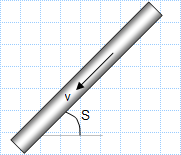Colebrook_White.xls

Description
Purpose of calculation: To determine the Velocity & Flow of water through pipes of varying diameter, slope & material.
Calculation Reference: In accordance with Australian Standard AS2200-2006 'Design charts for water supply and sewerage'.
Calculation Validation: Hydraulic Capacity Design Charts (readily available); AS2200-2006 'Design charts for water supply and sewerage'
Calculation Reference
piping
hydraulics
fluid dynamics
The Colebrook-White equation is used to determine the Darcy friction factor (f) in turbulent flow conditions. Once you have the friction factor, you can use the Darcy-Weisbach equation to calculate the head loss due to friction, and then determine the flow velocity (V) and flow rate (Q) of water through pipes of varying diameter, slope, and material.
Here are the steps:
- Colebrook-White equation:
The Colebrook-White equation is an implicit equation used to calculate the Darcy friction factor (f) for turbulent flow:
1/√f = -2 * log10[(ε/(3.7D)) + (2.51/(Re√f))]
where:
- f = Darcy friction factor (dimensionless)
- ε = pipe roughness (m)
- D = pipe diameter (m)
- Re = Reynolds number (dimensionless)
Note that you will need an iterative method (e.g., the Newton-Raphson method) to solve this equation, as it is not explicitly solvable for f.
- Calculate the Reynolds number (Re):
Re = (ρ * V * D) / μ
where:
- ρ = water density (approximately 1000 kg/m³ for freshwater and 1025 kg/m³ for seawater)
- V = flow velocity (m/s)
- D = pipe diameter (m)
- μ = dynamic viscosity of water (approximately 1 x 10^(-3) Pa·s for water at 20°C)
- Darcy-Weisbach equation:
Use the Darcy friction factor (f) obtained from the Colebrook-White equation to calculate the head loss due to friction (hf) in a pipe:
hf = f * (L/D) * (V^2 / 2g)
where:
- hf = head loss due to friction (m)
- L = pipe length (m)
- D = pipe diameter (m)
- V = flow velocity (m/s)
- g = acceleration due to gravity (approximately 9.81 m/s²)
- Calculate the flow velocity (V):
To determine the flow velocity, use the energy equation that includes the head loss due to friction (hf), the head loss due to elevation change (h_elevation), and the available head (h_total):
h_total = hf + h_elevation
Once you have the head loss due to friction (hf), you can rearrange the Darcy-Weisbach equation to calculate the flow velocity (V):
V = √[(hf * 2g * D) / (f * L)]
- Calculate the flow rate (Q):
Finally, use the flow velocity (V) and the pipe's cross-sectional area (A) to calculate the flow rate (Q):
Q = A * V
where:
- A = cross-sectional area of the pipe (m²) = π * (D/2)^2
By following these steps, you can use the Colebrook-White method and the Darcy-Weisbach equation to determine the velocity and flow of water through pipes of varying diameter, slope, and material. Keep in mind that the Colebrook-White equation is applicable for turbulent flow conditions and may not be suitable for laminar flow.
Calculation Preview
Full download access to any calculation is available to users with a paid or awarded subscription (XLC Pro).
Subscriptions are free to contributors to the site, alternatively they can be purchased.
Click here for information on subscriptions.
